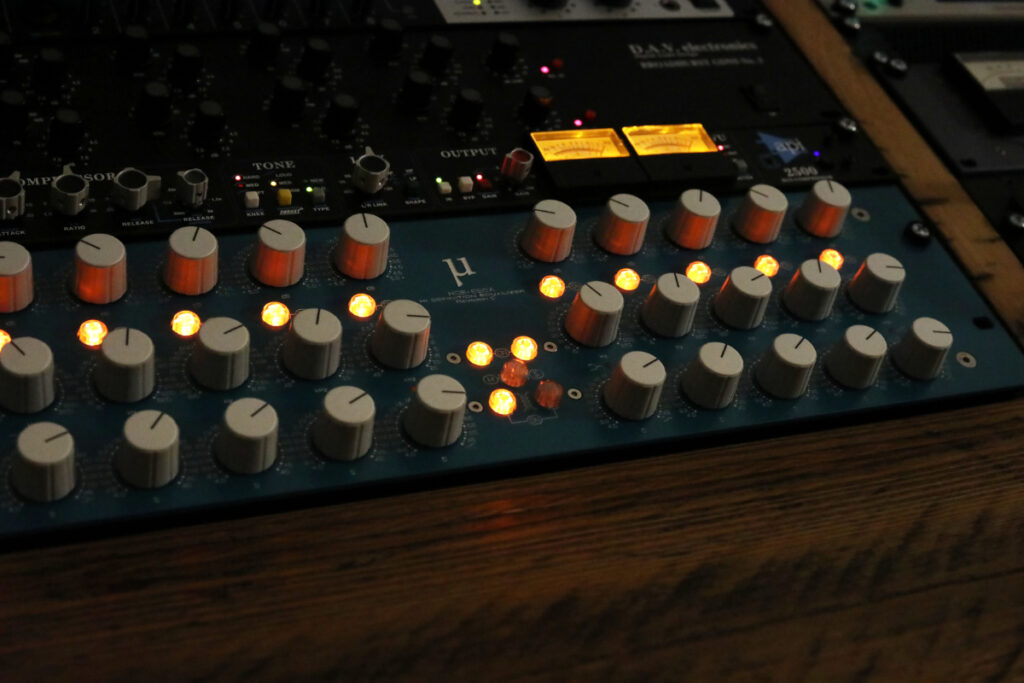Mid/side processing is a powerful technique that can be extremely useful in the right circumstance. But it can be a little difficult to get your head around and understand exactly what it’s for. Here we look at what mid/side processing is, how to achieve it and what to use it for.
What is mid/side?
Mid/side – sometimes called sum/difference – is a technique whereby a stereo recording is changed from the usual left and right to mid and side. The ‘mid’ or ‘sum’ is the mono portion of the recording (everything the left and right signals have in common) and the side is the stereo portion (everything else).
Using mid/side, we can more easily zone in on different parts of the stereo recording for EQ or compression say, or even manipuate the stereo image itself.
Manipulating M/S with free plugins
The easiest way of constructing an M/S matrix is to use a free plug-in like Voxengo’s MSED. This let’s you chain the relative gain of the mid and side signals to effect stereo width (another free plugin for this is included in BlueCat’s free gain package).
MSED will also act as an M/S encoder and decoder. Set it to encode and the left portion of the signal will become the M and the right, the S. You can then use any plugins that allow you to manipulate the L and R channels separately (but that don’t include an M/S matrix themselves) to manipulate the M/S signal, before sticking in another instance of MSED set to decode to convert it back to stereo.
How to construct a mid/side matrix without plugins
As easy as using MSED is, for additional flexibility (and understanding of what’s happening) it’s worth constructing your own M/S matrix at least once or twice.
The principle is simple – the M signal is everything common to the L and R signals, and the S is everything that is not. So, to construct your own M/S matrix:
- Split your stereo recording into 2 mono tracks – 1&2. Pan centre.
- Make duplicates of each one – 3&4. Pan centre.
- Send each pair to a separate group – buss 1&buss 2
- Invert the phase on track 4.
- Create 2 new buses – M&S
- Send buss 1 to M and buss 2 to S
- Pan M hard left and S hard right
- Invert the phase on buss S
This way you can now use any plugin that works in mono to manipulate the M&S signals separately.
Common uses of M/S processing
M/S processing is useful whenever you need to really zone in on a particular part of a stereo recording and the stems aren’t available. For example, if there’s an edgy sounding guitar at the edge of the field you can use an EQ cut on the S channel only to smooth it out.
How successful this sort of thing is depends on where instruments are panned, sometimes you just have to leave it be. Some common uses of M/S processing though are:
- Stereo width
- Increasing/decreasing stereo width by adjusting the relative gain (more S = wider). This has fewer artifacts than using ‘stereo widener’ plug-ins that often make use of comb filtering. Another approach is to use a high boost (8-16kHz) on the S channel to increase top end width.
- Mono-ing bass
- Tighten up bass by using a high pass filter at around 100Hz on the S channel.
- De-essing
- Use a de-esser on only the M channel (for lead vocals) or S (for backing vocals) in a complete mix.
As you can see, the sorts of problems that M/S processing can address are usually better dealt with earlier in the chain – but when that’s not an option, mid/side can be tremendously powerful.


